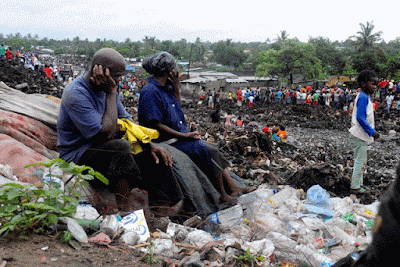By Thomas O. Scarborough
On 20 March 2025, I delivered the Annual Philosophy Lecture in Malta. This was a wide-ranging talk on Holism. However, one aspect in particular received close attention afterwards. How our view of the whole touches on environmental decline. Here, I draw out this aspect of my lecture:I proposed, in my lecture, that there is a “nameless Whole”. This lies beyond everything that we name and define. I capitalise this Whole, so as to distinguish it from finite wholes, which we do name and define. For instance, watermelons, molecules, or engines.*
Now suppose that I name a term ”mass”—and define mass. As soon as I define it, I exclude from its definition everything that it is not. Typically, I do so quite rigorously.
Now let us expand on this. Suppose that I name and define many terms at the same time. Acceleration, momentum, and so on. These terms may belong, for examaple, to a theory, a model, or an algorithm. I now exclude everything that all of these terms are not.
The same is true of words. I may use one or many words. As soon as I define them, I exclude everything that they are not. In fact, merely by speaking some words, I cut off vast aspects of reality.
We could say that we “define things out”. And as we define terms or words, we “define out” uncountably many things. They are off the charts—out of the discussion. They belong, not to finite wholes, but the nameless Whole beyond. And these may now become extremely dangerous to our environment.
Take the example of big data. This is extremely large data sets which we analyse computationally. Big data excludes all that it does not include. Thus we make billions (far more than billions) of computations per second which exclude all that they do not include.
Such computations include public data, business data, and personal data, among other things. Yet environmental data is largely missing. Billions (and billions) of times a second, across the globe, in nearly every town and city—indeed, in the devices in our very own hands—the environment is thus passed over.
Now let us consider science. By definition, science excludes unwanted influences on independent variables. It, too, “defines things out”. In the words of philosophers Kamlah and Lorenzen, "Physics investigates processes ... by progressively screening things out."
This is the scientific method. And this “screening out” happens not only in the laboratory. It happens every time we apply the science to the world.
Take, for instance, the internal combustion engine. When this was first tested, its emissions were not only overlooked in the laboratory. They were overlooked every time an internal combustion engine was built. The same for fridges which released CFC’s. One could name thousands, if not millions, of examples besides.
The concept of the nameless Whole enables us to see that, beyond our finite wholes, uncountable things lie. They lie beyond the things which we define and describe. Due to the things that we “define out”, therefore, our whole planet is overlooked in one way or another—and is in deep trouble today.
Ian Rizzo of the Philosophy Sharing Foundation wrote up an excellent summary of my Annual Philosophy Lecture. He noted there that I put forward “the ultimate culprit” behind environmental crises. This is our blindness to the nameless Whole.
------------------------------
* I have simplified the discussion of finite and nameless Wholes, but that does not matter here. Most importantly, finite wholes may be considered a subset of the nameless Whole. As in Lao Tzu: “The Nameless is the beginning of the ten thousand things.” Or Anaximander: “That which is infinite is other than the elements, yet from it the elements arise.”










